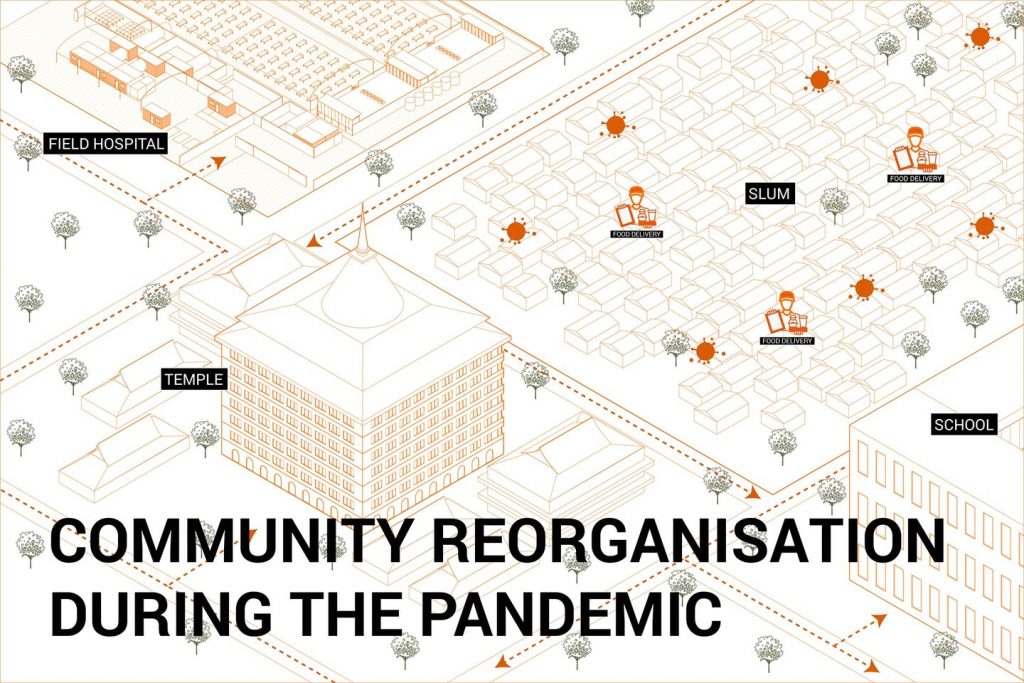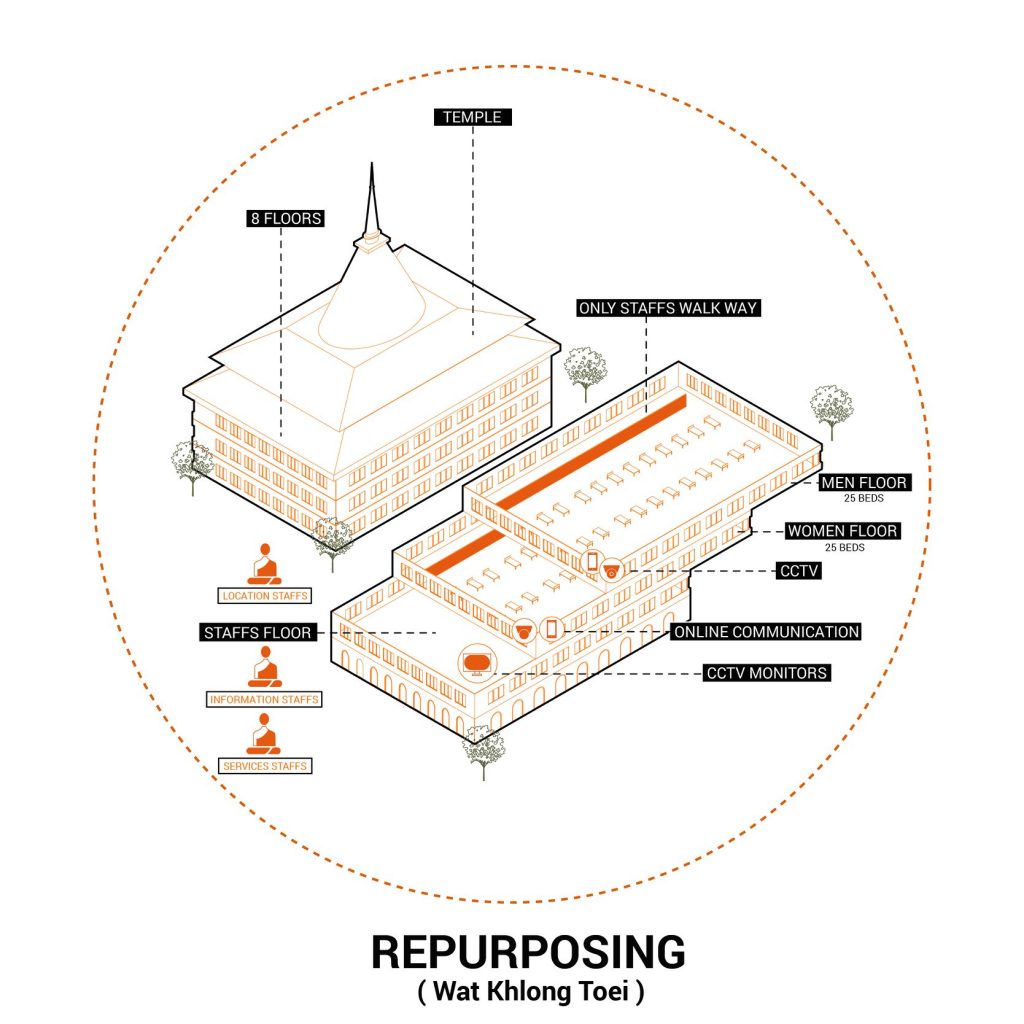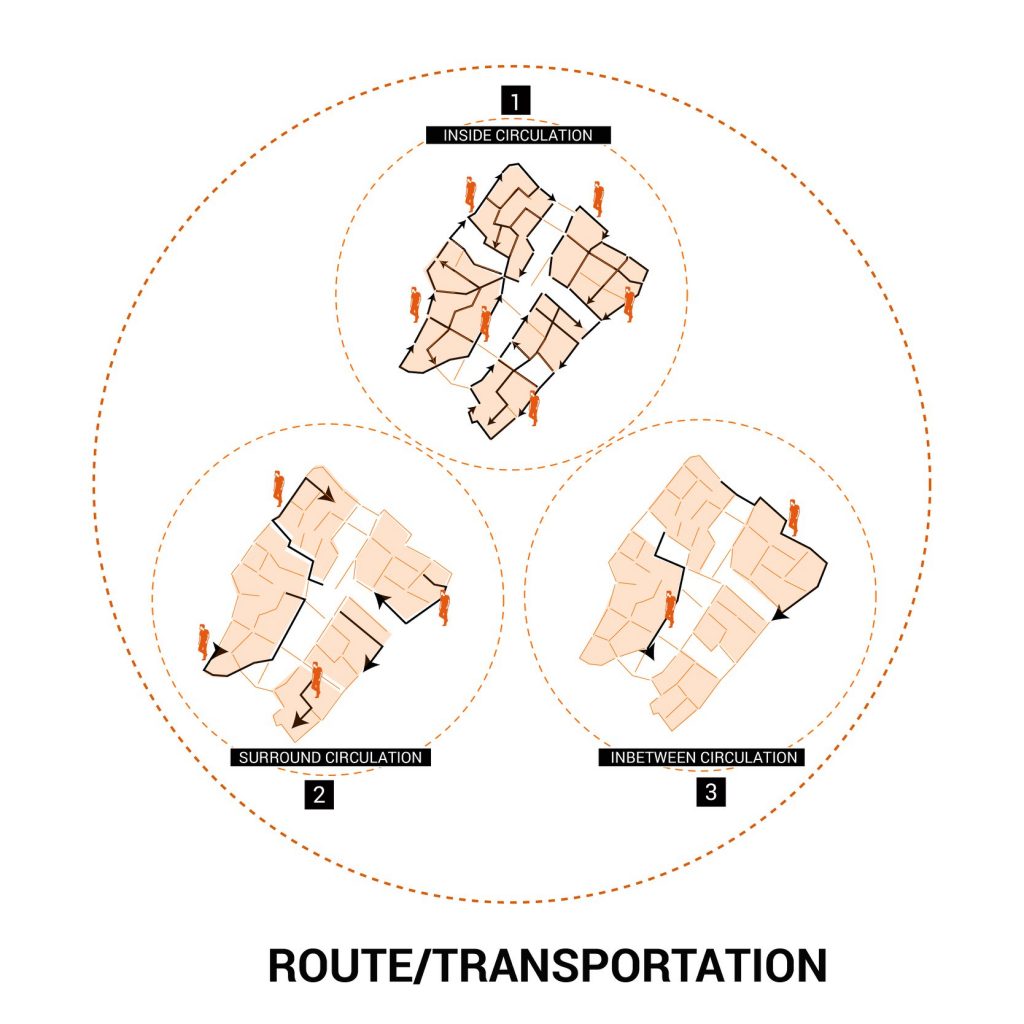
[Knowledge] Community Reorganisation During the Pandemic
.
[Please scroll down for English Translation]
.
ปฏิเสธไม่ได้ว่าโรคระบาดส่งผลกระทบต่อวิถีชีวิตการเป็นอยู่ของทุกคน สำหรับโรคโควิด -19 ถึงจะมีอาการเหมือนไข้หวัดธรรมดาและสามารถรักษาให้หายได้ แต่เมื่อติดเชื้อในปอดก็อาจรุนแรงถึงเสียชีวิตได้เช่นกัน งานวิจัยระบุว่าไวรัสชนิดนี้สามารถแพร่กระจายทางอากาศและละอองได้ ดังนั้นจึงมีข้อแนะนำให้ทุกคนเว้นระยะห่างจากกันอย่างน้อย 2 เมตรเพื่อลดความเสี่ยงในการติดเชื้อไวรัสนี้เพราะอัตราการแพร่ระบาดที่ง่ายและรวดเร็ว
.
ในประเทศไทย การระบาดระลอกที่ 3 ที่เกิดขึ้นขณะนี้นั้นสาหัสกว่าครั้งที่ผ่านมา ส่งผลทำให้โรงพยาบาล โรงพยาบาลสนาม หรือพื้นที่กักกันที่จัดเตรียมโดยรัฐบาลไม่สามารถรับผู้ป่วยได้เพียงพอ และออกนโยบายการกักตัวที่บ้านให้แก่ประชาชน อย่างไรก็ดีหลายครั้งการควบคุมการแพร่กระจายของไวรัสเป็นเรื่องที่ยากลำบาก โดยเฉพาะในชุมชนแออัดที่มีผู้คนจำนวนมากอาศัยอยู่ในพื้นที่ขนาดเล็กและหนาแน่น ทำให้บริการสาธารณะสุขไม่สามารถเข้าถึงทุกครัวเรือนได้ ดังนั้นจึงต้องมีการปรับโครงสร้างเชิงพื้นที่ การคัดกรองผู้คน และวิธีรับมือผู้ติดเชื้อใหม่ วันนี้เราจะมาดูแนวทางการจัดการและการยับยั้งการแพร่ระบาดในพื้นที่แออัดกันว่าควรทำอย่างไรดี
—
There is no denying that the pandemic has affected everyone’s lifestyle. The COVID-19 also known as the Coronavirus disease, whilst has the symptoms of common cold and is curable, but when infected in the lungs, could also lead to death. According to research, it is widely known that this virus can spread through airborne and droplets, therefore it is recommended for everyone to keep a minimum distance of 2-meters from each other to lower the risk of infection. There are several more precautions that could be taken during the pandemic, so now the question is how do we manage the risk of infection in a crowded community.
.
In Thailand, the 3rd wave of the pandemic had hit harder than any other waves. There were so many cases that hospitals, field hospitals, and quarantine spaces provided by the government are not available for everyone leading to home quarantine policy.
In many cases, there are difficulties in containing the spread of the virus, especially in a crowded community where many people live in small congested spaces and sanitation services are not able to reach every household in need. Hence, it is essential to bring up the new spatial reorganization, people screening, and infected patient caring technique. Today we’ll be looking through the multiple possibilities of managing crowded neighborhoods through the pandemic.



Content by Shma Lab
Reference :
Atos International. (2020, April 3). GlobeNewswire. Retrieved from COVID-19: Atos and the City of Vienna
implement system for digital epidemic management:
the-City-of-Vienna-implement-system-for-digital-epidemic-management.html
CORLU Municipality. (2020, May 5). CORLU BELEDIYESI. Retrieved from We Reach Those in Need with the Spirit of Solidarity:
González, J. F. (2020, October 29). Retrieved from Unidirectional Pedestrian Circulation:
file:///C:/Users/User/Downloads/preprints202010.0598.v1.pdf
OECD. (2020, July 23). OECD Policy Responses to Coronavirus (COVID-19). Retrieved from Cities policy
responses:
d1e1578
Red Cross EU Office. (2020, August 26). Red Cross EU Office. Retrieved from COVID-19 conversations: Howto tackle rising needs and stigma:
WHO. (2021, May 6). WHO | World Health Organization. Retrieved from Coronavirus disease (COVID-19)
advice for the public:
WHO. (2021, March 1). WHO | World Health Organization. Retrieved from Roadmap to improve and ensure good indoor ventilation in the context of COVID-19:
กรมควบคุมโรค. (2021). กรมควบคุมโรค. Retrieved from โรคตดิเชื้อไวรสัโคโรนา 2019 (COVID-19):
ผู้ช่วยเจ้าอาวาสวัดสะพาน, พ. เ. (2021, พฤษภาคม 11). ศูนยกักกันรอสงตัว คลองเตย: ความเขาใจวิถีชีวิตคนหาเชากินค่ํา.
(อ. สุขโข, Interviewer)
ศาสตราจารยเกียรติคณุ นายแพทยอมร, ล. (2021). เรื่องนารูเกี่ยวกับโรคตดิเชื้อ COVID-19 จากเชอื้ไวรัส SARS-CoV-2. Retrieved from แพทยสภา:

